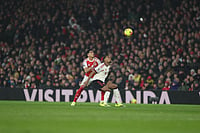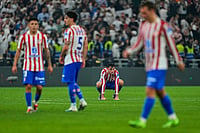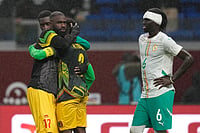“People think—wrongly—that speculative fiction is about predicting the future, but it isn’t; or if it is, it tends to do a rotten job of it. Futures are huge things that come with many elements and a billion variables, and the human race has a habit of listening to predictions for what the future will bring and then doing something quite different.
What speculative fiction is really good at is not the future but the present— taking an aspect of it that troubles or is dangerous, and extending and extrapolating that aspect into something that allows the people of that time to see what they are doing from a different angle and from a different place. It’s cautionary.”
—From the introduction to Ray Bradbury’s Fahrenheit 451 by Neil Gaiman
In this book that first came out in 1953, the writer describes a dystopian place, books are outlawed and “firemen” burn them. In fact, he had called the fire station to ask the exact temperature at which a book burns. Real-life encounters had inspired Bradbury to write it and in later years, he said in interviews how mass media had led to a reduced reading of literature and the book was a commentary on burning of books in the United States. This book was a reaction to thought control and censorship. We are faced with such issues now along with the complexities of a post-truth world. We have been witnessing increasing censorship of free speech, and the insistence on “good news” has led to polarised newsrooms. There is more propaganda and less news. But there are always other ways to tell stories. Through metaphors, through allegories. Things have changed over the years. Fake news is real now. Facts are twisted and news is manufactured.
Imaginative storytelling has the ability to navigate complex political and social structures and expand the scope of the possible. Writers of non-fiction have always used the tools of novelists to reveal things.
Journalists often find themselves navigating the world of fact and fiction. Take memory, for instance. It is fictive, too. How does one verify memory?
What if there is a penalty for speaking? What if there is a mandate for writing and publishing only good news? The future is an extension of the past and the present.
In this issue, we have imagined newsrooms and places that do not yet exist. Or perhaps they do. This “not-yet”, as writer Gaiman says, is made up of three phrases.
“What if . . . ?
If only . . .
If this goes on . . .
“What if . . . ?” gives us change, a departure from our lives. (What if aliens landed tomorrow and gave us everything we wanted, but at a price?)
“If only . . .” lets us explore the glories and dangers of tomorrow. (If only dogs could talk. If only I were invisible.)
“If this goes on . . .” is the most predictive of the three, although it doesn’t try to predict an actual future with all its messy confusion. Instead, “If this goes on . . .” fiction takes an element of life today, something clear and obvious and normally something troubling, and asks what would happen if that thing, that one thing, became bigger, became all-pervasive, changed the way we thought and behaved. (If this goes on, all communication everywhere will be through text messages or computers, and direct speech between two people, without a machine, will be outlawed.),” he writes in the introduction to Bradbury’s 2013 edition of the book.
We have read these books that tell us about the not-yet places and things. In the meantime, many not-yets have become real. This issue breaks away from the traditional journalism format to imagine the dystopian world of a “happy news industry” and other such worlds.
Sometimes, formats need to be broken. We must imagine more. It is for the sake of caution. For the sake of expression, too.
(This appeared in the print as 'A Not-Yet World')
[DISCLAIMER: The following stories in this issue are a work of fiction inspired by the state of news media today and are meant for reaction purposes only.
All characters, names of characters, places, events, depicted in these pages are purely fictitious. Any resemblance/similarity to any person living or dead and/or event and/or location is only coincidental at best, and we shall not be responsible or liable in any manner. This disclaimer is also to clarify that these write-ups by the staffers are not meant to defame/denigrate/hurt sentiments of any person, religious group, community, institution, nationality, profession or any class of person(s), gender, caste or any religion in any manner or in any way.
Any thinking on the part of the readers based on the contents of this issue shall be entirely at his/her/their own discretion and free will, and we shall not be liable and/or responsible in any manner whatsoever for the same or any issue arising therefrom.
Inspired by real events, the subject matter of this issue may be sensitive in nature and hence we urge the readers to exercise discretion as appropriate. Some content might be disturbing, but we assure you that it is all fiction and any resemblance to anything or anyone real are only a matter of chance and not intentional, although they aren’t regretted.]

























